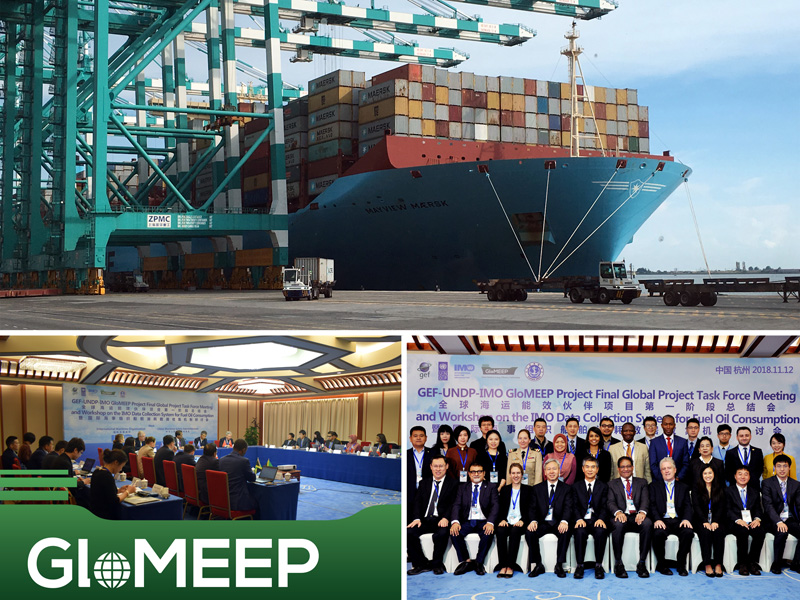IMO’s strategy on reducing greenhouse gas emissions from ships embraces an ambitious vision to phase out these emissions entirely as soon as possible. But, for this to be achieved, a number of barriers need to be overcome. For nearly three years, the GloMEEP project has been playing a key role in reducing GHG emissions by promoting the uptake of energy-efficiency measures for shipping. Last week (12-13 November) GloMEEP held a two-day “stock-taking” meeting in Hangzhou, China to assess the progress made during the first phase of the project.
GloMEEP’s 10 “lead pilot countries” (LPCs) all reported considerable progress in a number of areas. All 10 LPCs undertook a systematic baseline assessment of shipping and port emissions and developed national emission reduction strategies and policies based on the Ships and Ports Emissions Toolkits developed by the project; countries that had not yet implemented IMO’s international treaty on air pollution (MARPOL Annex VI) have all drafted legislation and are working on enacting it into national law and the four new training packages developed through the project have resulted in more than 1000 participants being trained at national, regional and global level.
One major benefit emerging from the GloMEEP project has been the Global Industry Alliance to Support Low Carbon (GIA), a public-private partnership to support the project objectives. The GIA has pioneered several on-going initiatives, including an e-learning course on energy-efficient ship operation, a study on just-in-time ship operation and a standardized protocol to validate the performance of energy- efficiency technologies.
Responding to climate change is one of IMO’s key strategic directions for the next six years, reflecting the Organization’s firm commitment to the 2030 Agenda for Sustainable Development. IMO Member States have already expressed the need for the GloMEEP project to be continued, and ideas for a second phase, including funding possibilities, were discussed at the China meeting.
GloMEEP is funded by the Global Environment Facility and implemented by IMO in partnership with the UN Development Programme, who co-chaired the meeting. It was hosted by the China Maritime Safety Administration.
